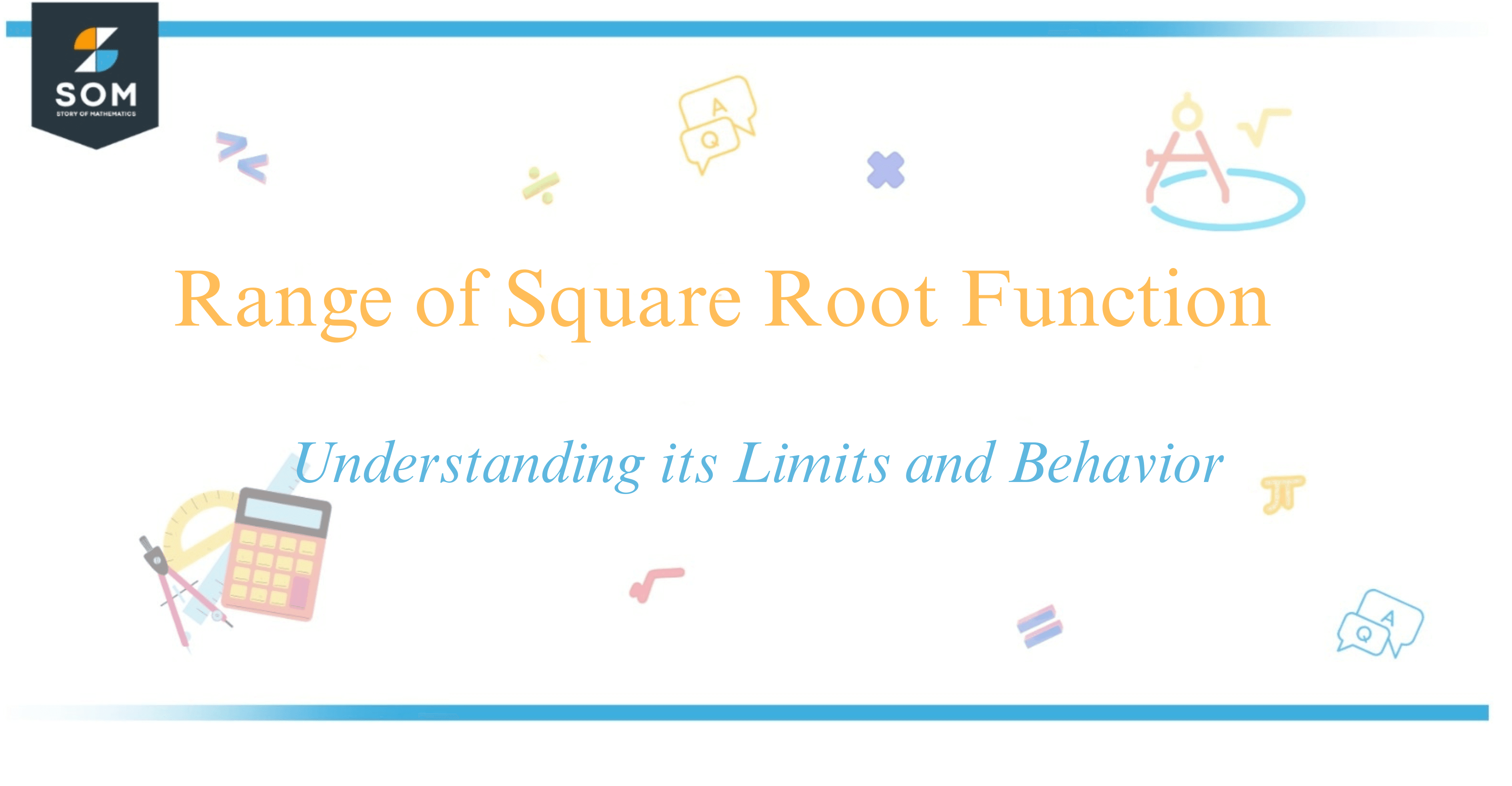JUMP TO TOPIC

The range of a square root function like $ f(x) = \sqrt{x} $ plays a crucial role in understanding how this function behaves. For any given real number ( x ), the square root function returns a value that is the square root of ( x ).
The domain of this function, which is the set of all possible real number inputs, is limited to $x \geq 0$ since the square root of a negative number is not a real number.
Consequently, the range — the set of possible outputs or function values — consists of real number values starting from 0 and extending to positive infinity, denoted as $ [0, +\infty) $.
As I continue to explore function characteristics, keeping in mind the connection between the domain and range is essential.
This relationship ensures that mappings from inputs to outputs are well-defined and that the function operates within the constraints of real numbers. Stay tuned as I dive deeper into the implications of this foundational concept in the realm of mathematics.
Exploring the Range of a Square Root Function
In this section, we’ll understand how to pinpoint the range of a square root function and observe its application in real-world examples.
Determining Range
The range of a square root function represents the set of all possible output values. For the standard square root function, $f(x) = \sqrt{x} $, the domain comprises all non-negative real numbers, expressed as $x \geq 0 $ or $ [0, +\infty) $ in interval notation.
Consequently, since the square root of a number is always non-negative, the range is also all non-negative real numbers, or $[0, +\infty)$ in interval notation.
Square root functions are increasing functions with their graphs resembling one-half of a sideways parabola with the vertex at the origin (0, 0).
This is because square root functions are one-to-one, meaning each element in the domain corresponds to a unique element in the range.
Real-World Examples
The concept of square root functions is pervasive in real-world examples, often without us even realizing it. Take, for instance, the time it takes an object to fall from a certain height.
If we ignore air resistance, the time is proportional to the square root of the distance fallen due to gravity. Here, the distance is a radicand, which inputs into our square root function, while the time is the function’s output, falling within the function’s range.
Another example can be found in architecture, particularly in determining the ratio of heights and widths, which sometimes involves square roots to maintain symmetry and balance.
The aesthetically pleasing ratio often called the golden ratio, involves the square root of 5. Here, the design elements are governed by a ratio that is influenced by a square root function, showcasing the relevance of the function’s range in practical applications.
Conclusion
In this exploration of the range of the square root function, I’ve discussed the fundamental aspects of the function and its behavior.
The range is essentially determined by the nature of the square root operation. A square root, by definition, does not produce negative results; therefore, the function
$$ f(x) = \sqrt{x} $$
can only yield non-negative values. This is reflected in the range, which consists of all real numbers ( y ) greater than or equal to zero, formally written as:
$$ [0, +\infty) $$
Understanding the domain and range of functions like the square root is not only important for academic purposes but also for real-world applications where these concepts play a crucial role.
As I unpacked the characteristics of this function, remember that its graph is a curve starting at the origin (0, 0) and extends indefinitely in the ( x )-positive direction, while remaining above the x-axis.
Reflecting on mathematical concepts like this reinforces how mathematical functions have distinct properties defining their overall behavior.
Familiarity with these function properties enables me to handle a variety of mathematical problems and practical scenarios with competence and confidence.
